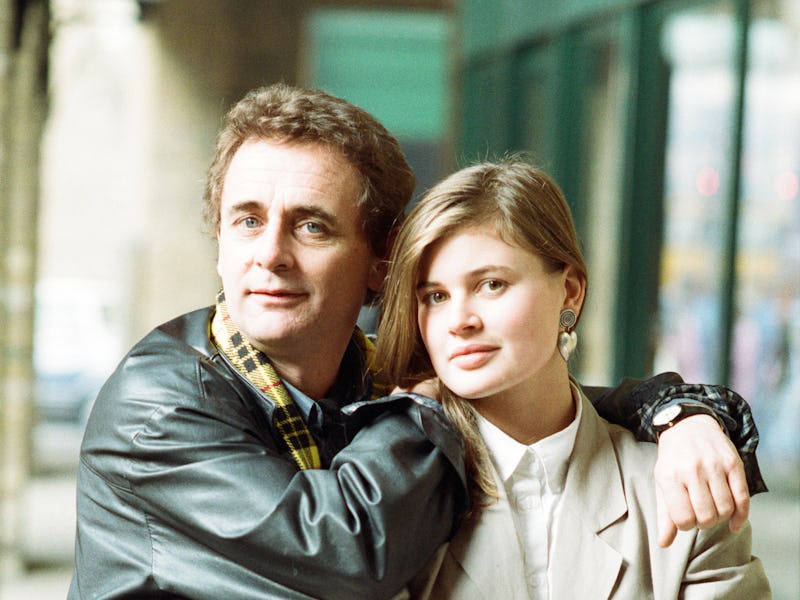It’s All A TV Show? A Brief History Of Doctor Who’s Meta-Fiction
Which Time Lord is real?

When it comes to parallel universes, the parallel world in which your entire life is popular fiction is perhaps the most mind-bending. And, although Doctor Who has been running since 1963, the actual onscreen adventures of the eponymous Time Lord only occasionally suggested that the Doctor might exist as fiction within their own canon.
But now, 37 years after Doctor Who nearly confirmed the existence of a Doctor Who TV series within its own continuity in “Remembrance of the Daleks,” the latest episode, “Lux,” fully commits to the bit. Here’s how the 15th Doctor (Ncuti Gatwa) and Belinda (Varada Sethu) have brought a very old Who concept to life.
Spoilers for Doctor Who Season 2, Episode 2, “Lux,” ahead.
Belinda Chandra (Varada Sethu) The Doctor (Ncuti Gatwa) try to escape a theater in “Lux.”
In “Lux,” Belinda and the Doctor find themselves trapped inside a film reel, and eventually, inside a screen. Turns out, the meddling Mr. Ring-a-Ding is the god of light (making him part of the Toymaker’s legions), and defeating him will require the Doctor and Belinda to think outside of the box.
In the middle of the episode, and again at the end, Belinda and the Doctor do step outside of the box — taking them outside the boundaries of their own reality. In one memorable scene, the Doctor and Belinda encounter three Doctor Who fans who are actively watching the episode that we’ve been watching all along. Thanks to Mr. Ring-a-Ding, the Doctor and Belinda have entered a pocket dimension in which they are fiction. Or is it that simple? The fans worry that there is a double fiction occurring in this moment, and that once the Doctor and Belinda save the day, the universe in which Who is fiction will cease to exist, effectively destroying this trio.
But then, the end of the episode confirms that the “fans” still exist, which suggests that the idea that Doctor Who is fiction inside of its own universe wasn’t just a trick, but rather, quasi-canon. And there are several precedents for that.
Sylvester McCoy as the 7th Doctor in “Remembrance of the Daleks.”
Back in the 1988 serial “Remembrance of the Daleks,” the 7th Doctor (Sylvester McCoy) went back to 1963, around the same time the 1st Doctor (William Hartnell) began his adventure. In this episode, a popular TV series that began with the letter “Doc...” was teased, implying there might be a version of Doctor Who within Doctor Who.
This concept has pervaded essentially countless novels, comics, and audio dramas. So many, in fact, that there are essentially two separate entries on the TARIDS Wiki to document the different types of meta-Doctor Who fiction. Perhaps the most similar conceit in the past comes from the 1999 comic story “TV Action!” in which the 4th Doctor (and Beep the Meep) end up in a parallel world where Doctor Who is a TV series.
Mr Ring-A-Ding (Alan Cumming) has made it posssible for Doctor Who to get very meta.
Also, the Steven Moffat novelization of “The Day of the Doctor” (published in 2018, a full five years after the episode aired) established that the non-canonical Peter Cushing Dr. Who movies existed within Who canon and that the Doctor was aware of their creation. In fact, the 11th and 10th Doctors even pitch a possible third Dr. Who movie to Peter Cushing in the novel.
So, if we take “The Day of the Doctor” novelization as true canon, then that means the 15th Doctor was aware of at least one in-universe version of Doctor Who. What Lux has done is introduce the first in-universe fans of Doctor Who, rather than people (like Osgood) who are just fans of the actual Doctor. Will the “fans” return later this season?
Let’s hope they do, because if there’s one way that could fix any of its canon problems, or bring back forgotten characters, it would be because the walls between fictional dimensions and “real” ones are finally getting blended.